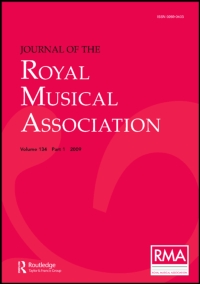No CrossRef data available.
Article contents
Extract
When I was honoured by an invitation to read a Paper before the Musical Association, the suggested title was “The Evolution of the String Quartet” But the word “evolution” has a scientific flavour which hardly accords with the, I am afraid, very unmethodical discourse which I am to present to you this evening. A practising musician has no leisure for learned research, and my acquaintance with String Quartets is no greater—is in fact very probably less—than that of many now present One slight qualification I may possess for talking on this subject may lie in the fact that I have written a certain amount of music in this form, and although the result has been to me disappointing, still the mere endeavour, however bungling, gives the writer a certain insight into the difficulties and perils of this form of musical composition, and increases his admiration for the performances of those great artists who have successfully surmounted the one and avoided the other. I wish, then, to treat of the String Quartet mainly from the composer's point of view, and particularly of the works of the classical masters. The use of the word “classical” in its musical application is rather strange. It may be taken as describing works that by their perfection of structure, as distinct from their purely emotional qualities, recall the sculpture of classical times,—or it may import that the works in question were written long ago (as time is reckoned in musical matters) and have become classical by reason of their survival. But it comes to much the same thing, I think. No piece of music, least of all a String Quartet is likely to have a long life which does not satisfy our sense of symmetry and proportion.
- Type
- Research Article
- Information
- Copyright
- Copyright © Royal Musical Association, 1915


